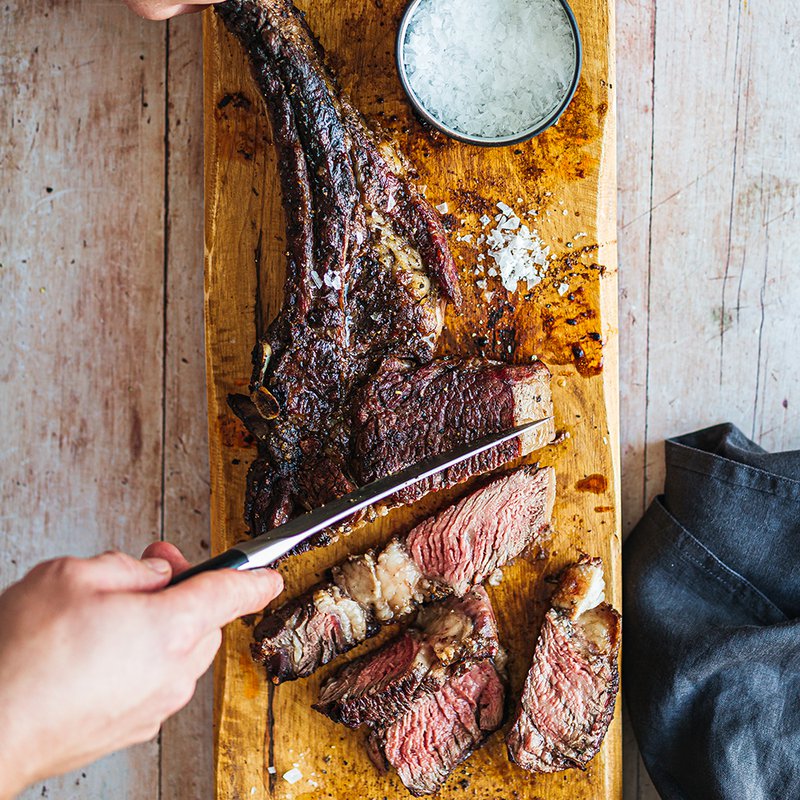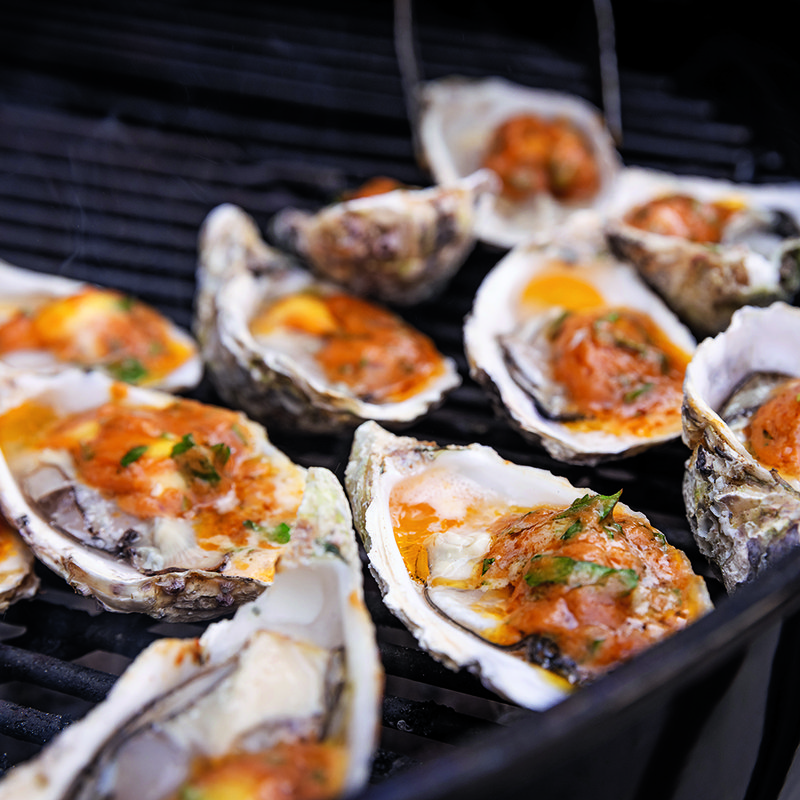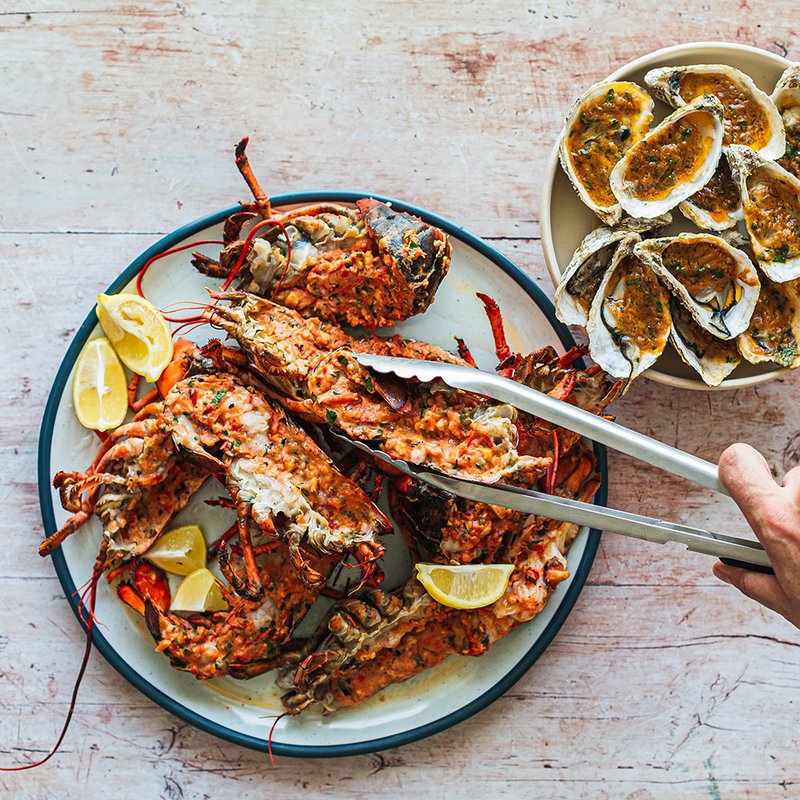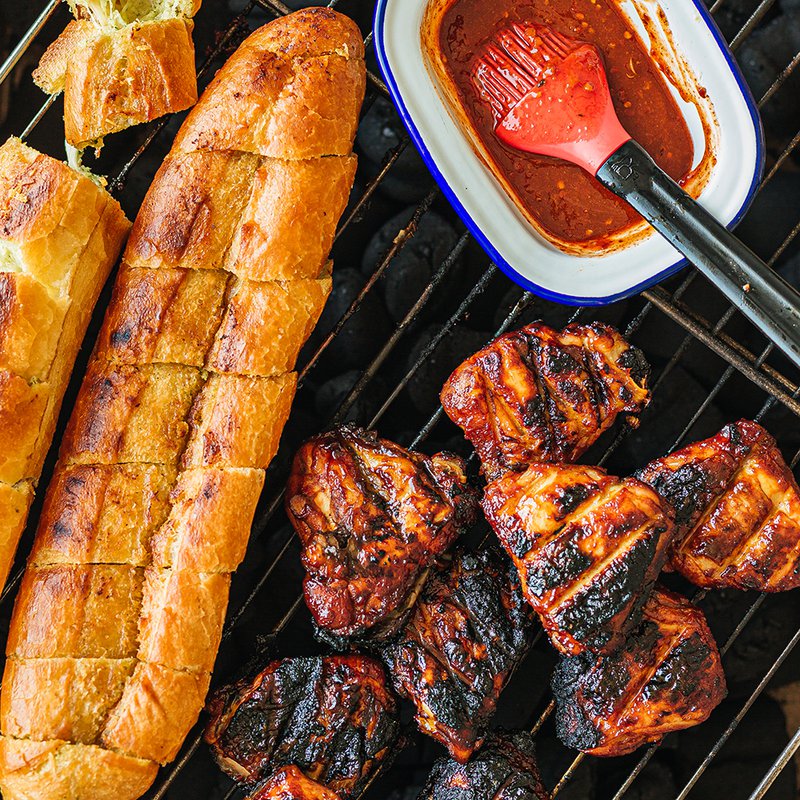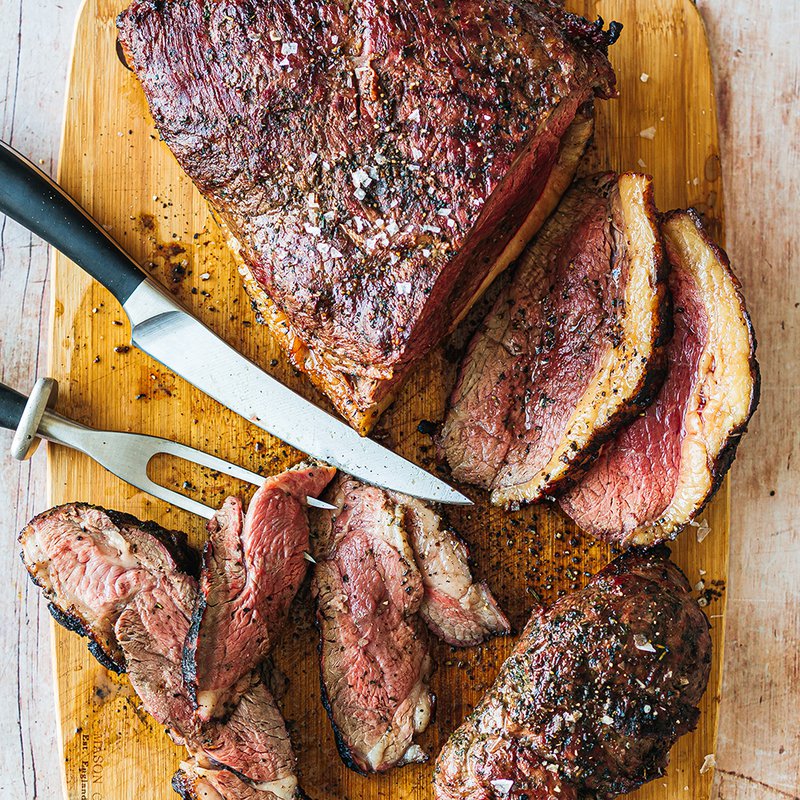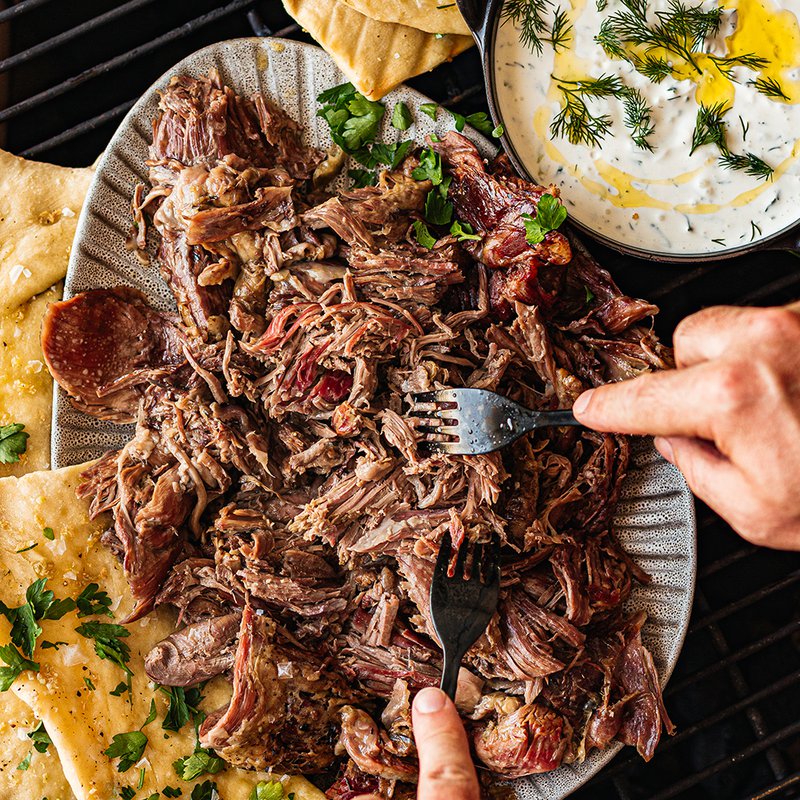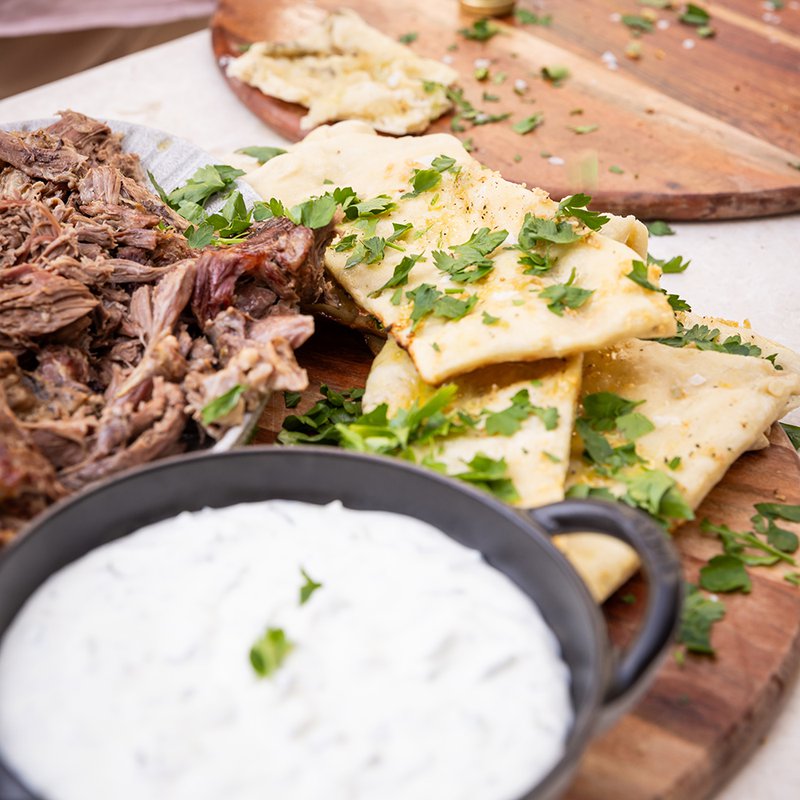Meet our in-house BBQ masters who, at a our HQ cookout, shared their favourite cuts, recipes and tips
THE BRAAI MASTER – Dihan Burger: Senior Merchandise Planner
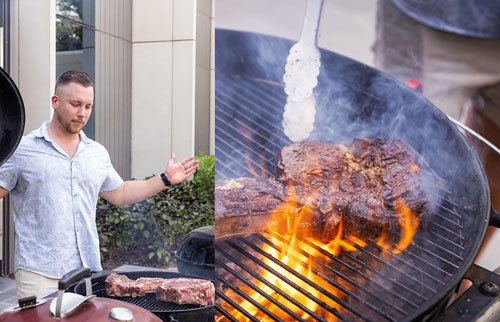
Dihan Burger is well aware that his surname sounds almost cosmically apt, given his profound dedication to the South African braai. He has, over the years, become a master of that art and science, and built a formidable reputation for his skills with the tomahawk. “It’s a nice piece of theatre,” he says of that particular monster cut, explaining that the rib-eye's fat levels also make for the optimal balance of “tenderness and flavour”.
Dihan started grilling at age six, developing an early, unshakeable belief in letting the meat dictate the method. Premium cuts, such as the tomahawk, best fit the simple approach of a true purist who lets the flavour take care of itself. “All it needs is premium-quality olive oil, salt and pepper.”
He suggests grilling the steak on low heat until it’s almost done, then searing it over high heat for extra char. “There’s so much fat on the meat that once it renders, it ignites the flames underneath. The fat then caramelises nicely, and you get those lovely grill marks.” He also uses South African wood chips to maximum effect, Sekelbos being especially aromatic.
But if the braai master has a single tip to offer, it’s just to be prepared.
“Have your ingredients and carving knives ready. Rub your meat and let it get to room temperature before getting started. That way, you can enjoy the process with your family and friends and not be on edge the whole time,” adds Dihan.
BIG T – Tom Harvey: Commercial General Manager
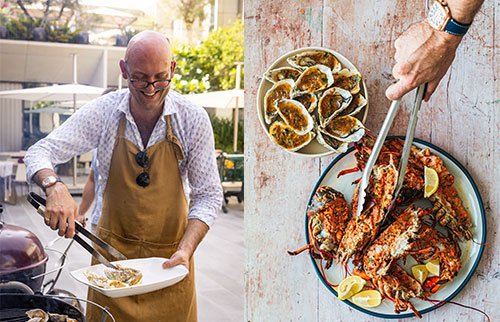
A food industry veteran with a renowned sense of style, Tom looks far too dapper to enjoy standing so close to a barbecue: surely there’s a danger of getting hot fat on his pocket square? But his confident air and natural flair play out just as elegantly across the coals, and his grill selections are as bespoke as his suits. Instead of off-the-rack standards like drumsticks and sausages, he prefers to give shellfish a showing.
“Seafood on a barbecue looks and tastes fantastic,” says Tom. “Many people fear oysters, but when cooked, they become delicious and less intimidating to eat, while lobsters are just one of the most beautiful foods on Earth.” His first recommendation was inspired by a restaurant dish he particularly loved: Dibba Bay oysters with umami miso butter.
“Simply make the miso butter, scoop it onto the oysters, place them on the barbecue, cook them for a few minutes and boom, there you go.”
His second recipe is a little more intricate, without requiring much time or effort: Canadian lobster with a burnt tomato and chilli butter twist. “Char the tomatoes, coat the flesh of the lobster with your chilli butter, place the flesh back in its shell and let it grill for 10 minutes.”
To Tom’s mind, a certain cool reserve yields the best results when cooking over fire, and he counsels a light touch on the grill. “Avoid slapping things onto the coals,” he says. “You will end up with a thick black crust and raw meat.” And for that final smoky flourish, he suggests playing around with different wood chips, like trying out different fabrics: “It’s all about building layers of flavours.”
SPITFIRE STEYN – Steyn Liebenberg: Ambient Drinks, Snacks and Confectionary Category Manager
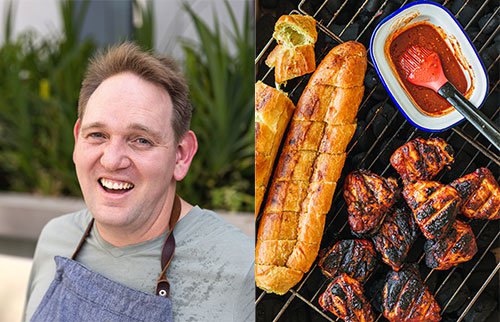
Unlike his fellow South Africans, Steyn discovered barbecue quite late in life, through his Kalahari-born wife and her family. A city boy whose knowledge of the grill went no further than lamb chops over coals, he learned from his father-in-law, “Everything from preparing a fire, to injecting meat with juices, to catching food in the wilderness”.
Humble in his present expertise, Steyn can make a masterpiece of barbecued chicken and show you how it’s done by way of bone-in, skin-on thighs in a marinade passed down from his wife’s ancestors.
“It’s tomato-based with tang from the lemon juice, fragrance from the herbs and spices, and sweetness from brown sugar.” Start bone-side down, he says, and take care with the fine line between raw and cooked chicken. “It’s like handling fish. Keep an eye on it, treat it right, and let it cook slowly.”
He serves the thighs with toasted baguette with generous lashings of garlic butter.
DR. KRIS THE BELGIAN BUTCHER – Kristof Soetens: Protein Category Manager
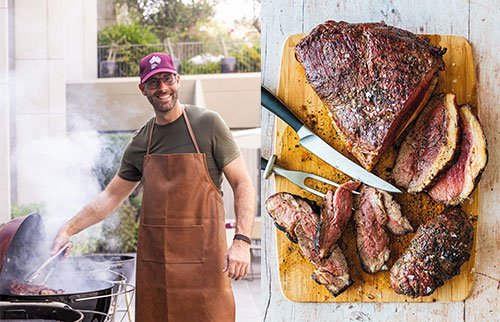
You would think that a lifelong career in butchering and meat-buying might sap a person’s pleasure in the raw materials, but Kristof still seems pretty joyous at the prospect of a Brazilian-style cookout.
“Today, we’re making picanha!” he announces with palpable glee, before laying out his core strategy: to deploy indirect heat by judiciously placing a rump steak next to hot coals, not atop them, before searing it off on the grill. Alternatively, Kristof suggests, “one can slice it and skewer it to roast, like the Brazilian tradition.”
When it comes to the cut itself, his passion for his specialist subject sizzles back to the surface. “The rump is a forgotten steak. It’s as juicy and tender as the striploin or rib-eye, but costs less, and it’s perfect for families.”
Born and raised in Belgium – perhaps one of the lesser-noted European centres of barbecue excellence – Kristof attended butchery school at 15, and his knowledge has since expanded to all areas of the meat trade. As such, he has no end of specialist tips and tricks to share.
For one thing, he advises: “Ask your butcher about the cut that suits your barbecue setup, be it a Weber, Kamado, or any other grill.”
He also stresses the importance of modulating heat levels to the cut in question. “Wagyu beef is meant to be sliced thin and seared off, whereas grassed-fed beef lends itself to slow-cooking or smoking. With Angus beef, the possibilities are endless … ”
MR. LONG TONG – Warwick Gird: Marketing General Manager
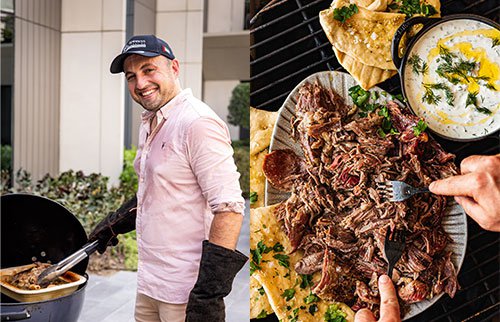
Quiet, patient and methodical but also highly convivial, Warwick is not one of those solitary barbecue warriors who likes to stand alone like a sentinel over the coals. The process itself is a means to an end, and the whole point is to bring people together.
“When you have people over for a barbecue, it’s normally happening on the side while you’re socialising,” he says. “We sit outside, take our time, put some music on and hang out while the meat cooks away.” Growing up beside the braai manned by his father in South Africa, he received a “gradual induction” into that native culinary art form, and took casual command of grilling the Sunday chicken when he was 13.
He later brought those traditions to Dubai and cooks much the same way for his own family and friends today – slow and easy. Warwick’s chosen showcase is a traditional roast adapted to the grill, perfect for the Emirati weather, and complemented by his zingy tzatziki and home-made flatbreads. It’s a method that rewards the braai master who prefers not to fuss, or to rush: he just leaves the leg of lamb cooking in a bath of beef stock over hot coals for hours.
“You have to grill the lamb low and slow,” he explains. “Having the bone on the leg gives the meat a lot more flavour, and by the end of the five-hour cook, it will fall off the bone.”

